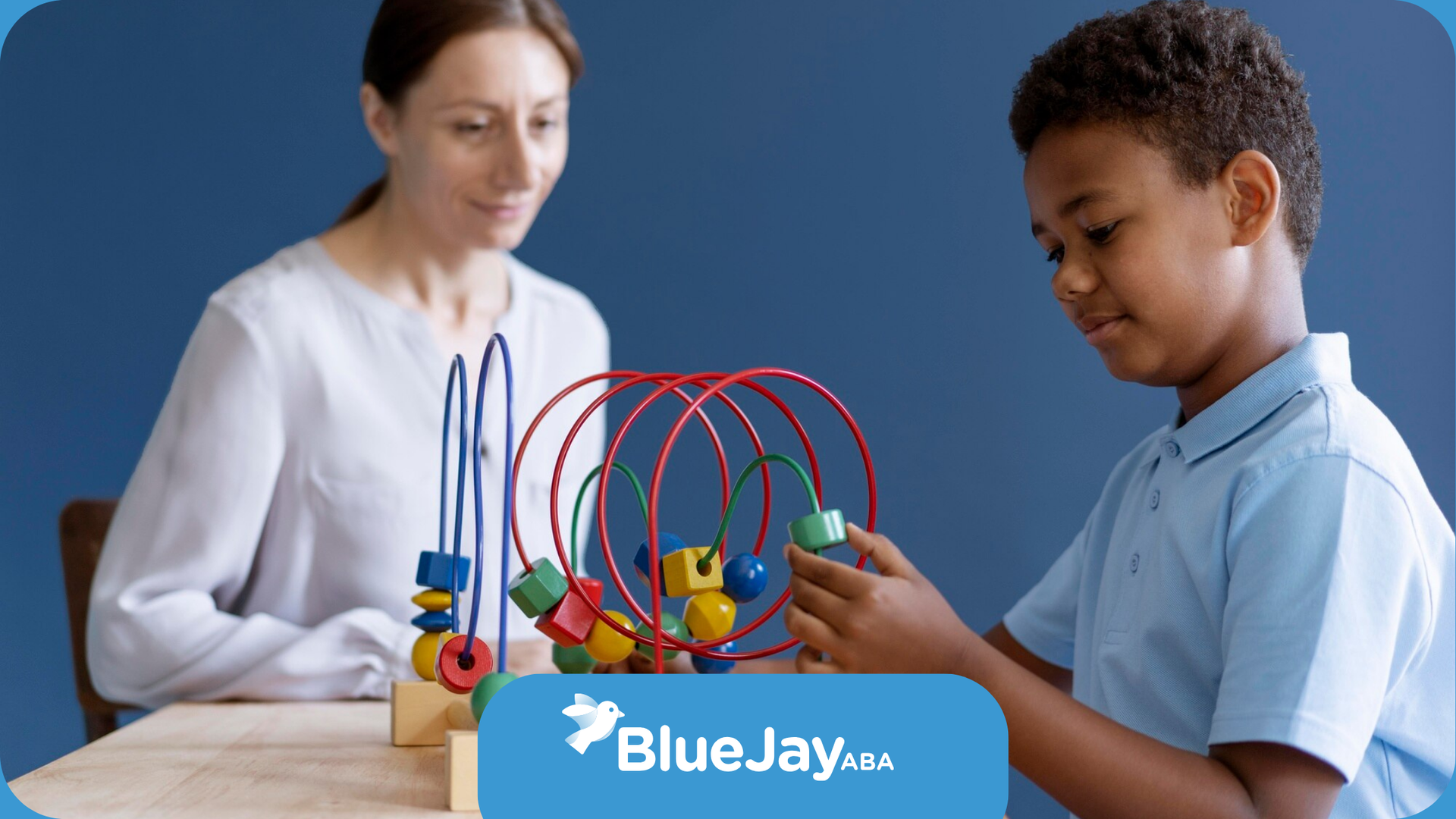What Does Autism Level 1 Look Like? Understanding the Signs
Autism Spectrum Disorder (ASD) is a developmental disorder that affects how individuals interact, communicate, and behave. The term “level 1 autism” is often used to describe those on the spectrum who require the least support. But what does autism level 1 look like in everyday life? This blog will explore the signs, behaviors, and challenges associated with level 1 autism, offering insights into how individuals experience the world and how their caregivers can support them.
Understanding the Levels of Autism
Before we dive into what autism level 1 looks like, it's important to understand the concept of the different levels of autism. The Diagnostic and Statistical Manual of Mental Disorders (DSM-5) categorizes autism into three levels based on the amount of support an individual needs:
- Level 1 (Requiring Support): Individuals at this level can function independently in many areas but may struggle with social communication and exhibit repetitive behaviors.
- Level 2 (Requiring Substantial Support): People at this level need more support in social interactions and communication and may have more pronounced repetitive behaviors.
- Level 3 (Requiring Very Substantial Support): Individuals at this level have significant challenges in social interaction and communication and may have severe repetitive behaviors that interfere with daily life.
Level 1 is often described as “high-functioning autism.” Individuals with autism level 1 may be able to attend school, hold a job, and live independently but might still face challenges that are not immediately obvious to others.
Signs and Symptoms of Autism Level 1
Autism is a spectrum, meaning that individuals with level 1 autism can exhibit a wide range of characteristics. However, there are some common signs and symptoms that help identify this level of the spectrum:
1. Social Communication Challenges
One of the hallmark signs of autism level 1 is difficulty with social communication. Individuals may:
- Struggle to initiate or maintain conversations.
- Have trouble understanding nonverbal cues like facial expressions, tone of voice, and body language.
- Struggle to understand social norms, such as taking turns in conversation or recognizing personal space.
- Engage in one-sided conversations, where they talk about topics that interest them without noticing if the other person is engaged.
Although they may desire social interaction, they can find it overwhelming or confusing, which can lead to social withdrawal or isolation.
2. Repetitive Behaviors and Routines
Repetitive behaviors are common in people with level 1 autism. These may include:
- Engaging in repetitive movements like hand-flapping or rocking.
- Repetitive speech patterns (echolalia), such as repeating phrases or words.
- Rigid adherence to routines or specific activities. Any changes in these routines can cause distress.
- Intense interests in specific topics, sometimes to the point of obsession.
These behaviors help individuals with autism feel grounded and in control but can also interfere with daily functioning in social, academic, and work settings.
3. Difficulty with Flexibility and Change
Individuals with autism level 1 often have difficulty with changes in their environment or routines. They may become anxious or upset when something does not go according to plan. For example:
- A sudden change in schedule can cause frustration or meltdowns.
- New situations, such as unfamiliar social settings or new tasks at work, can trigger anxiety.
- They may have trouble adjusting to new ideas or perspectives.
While people with autism level 1 may be able to adapt to changes over time, these adjustments often require support and understanding from caregivers and educators.
4. Sensory Sensitivities
Sensory sensitivities are common in people with autism level 1. They may experience heightened or diminished responses to sensory input, such as:
- Sensitivity to lights, sounds, textures, or smells.
- Avoidance of certain clothing materials because of discomfort.
- Overreaction to loud noises or crowded spaces.
These sensitivities can make daily tasks, such as going to the grocery store or attending a social gathering, challenging.
5. Emotional Regulation Difficulties
Emotional regulation can be another challenge for individuals with autism level 1. They may:
- Experience difficulty managing their emotions, leading to outbursts or meltdowns, especially when overwhelmed or frustrated.
- Have difficulty expressing their feelings in a way that others can understand.
- May become intensely focused on specific emotions, such as anxiety, anger, or sadness.
What Does Autism Level 1 Look Like in Daily Life?
For individuals with autism level 1, their daily experiences may look different than those of their neurotypical peers. Here's a glimpse into how autism level 1 may affect various aspects of life:
1. School and Work
In school, children with level 1 autism may have academic strengths, such as strong problem-solving skills or excellent memory. However, they may struggle with social relationships, group activities, and understanding social cues from teachers or peers. Teachers may need to provide structured, predictable routines, as well as accommodations to support communication and social interaction.
In the workplace, adults with autism level 1 may be highly skilled and productive in certain areas but struggle with social interactions, such as team collaborations or networking. They might find it difficult to read workplace dynamics or engage in casual conversations, which can impact their career growth or job satisfaction.
2. Social Relationships
People with autism level 1 may have a desire to connect with others but find it challenging to build and maintain friendships. They might:
- Struggle with understanding others' emotions and may not always know how to respond in social situations.
- Feel isolated or misunderstood, particularly if they do not have the support they need to navigate social expectations.
- Be more comfortable with familiar individuals or in structured settings, like family gatherings, rather than larger social events.
While forming close friendships or relationships may require effort, it is possible for individuals with autism level 1 to develop meaningful connections, especially when they receive support to navigate social challenges.
3. Family Life and Independent Living
Family life for those with autism level 1 can vary widely. With the right support, individuals can become more independent and participate in family activities. However, they may require assistance with:
- Organizing their daily schedule.
- Handling unexpected changes.
- Navigating social interactions during family events.
Independence is possible with the right support, including strategies for self-care, organization, and emotional regulation.
Supporting Individuals with Autism Level 1
While people with autism level 1 may not need as much support as individuals with other levels of autism, they can still benefit greatly from various strategies that help manage challenges and improve their quality of life. These may include:
- Therapies: ABA therapy, speech therapy, and occupational therapy can help improve communication, social skills, and adaptive behaviors.
- Structured Routines: Clear, consistent schedules help provide predictability and reduce anxiety.
- Social Skills Training: These programs can help individuals learn how to navigate social interactions, recognize social cues, and build meaningful relationships.
- Sensory Supports: Using sensory-friendly tools, like noise-canceling headphones or fidget items, can help manage sensory sensitivities.
With the right support and understanding, individuals with autism level 1 can lead fulfilling and successful lives.
Conclusion
At Blue Jay ABA, we understand the unique needs of individuals with autism level 1. Our specialized ABA therapy services provide support to enhance communication, social skills, and emotional regulation for individuals with autism, helping them reach their full potential.
Frequently Asked Questions
Can individuals with autism level 1 live independently?
Yes, many individuals with autism level 1 can live independently, though they may require support with certain aspects of daily life, such as managing emotions, social interactions, and maintaining routines.
How can I help a child with autism level 1 develop social skills?
You can help by providing structured social opportunities, such as playdates or group activities, and using social skills training programs. It's also important to model appropriate social behavior and provide positive reinforcement for social interactions.
Is autism level 1 the same as Asperger's Syndrome?
While the term "Asperger's Syndrome" was previously used to describe individuals with high-functioning autism, it is now part of the autism spectrum as a whole under the DSM-5. Autism level 1 is used to describe individuals who need minimal support, similar to what was once described as Asperger's.
Resources:
- https://psychiatryonline.org/doi/book/10.1176/appi.books.9780890425596
- https://www.webmd.com/brain/autism/high-functioning-autism
- https://neuroclastic.com/its-a-spectrum-doesnt-mean-what-you-think/
- https://my.clevelandclinic.org/health/symptoms/echolalia
- https://www.autism.org.uk/advice-and-guidance/topics/sensory-differences/sensory-differences
Related Posts








